Smith, James Francis
Killed in Action 1943-04-08
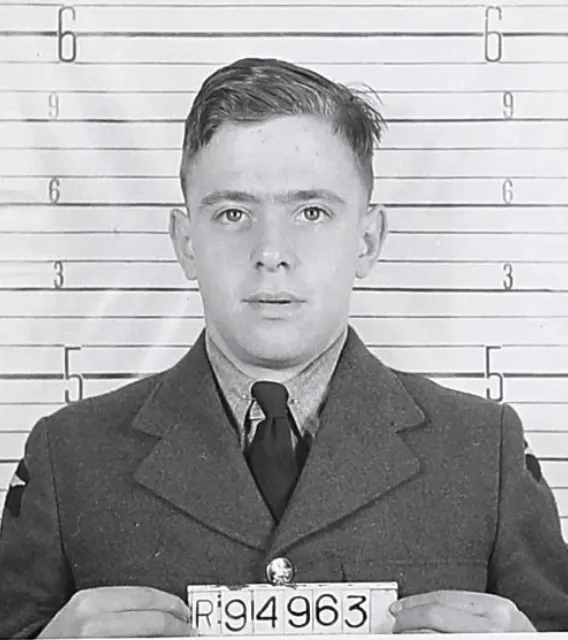

Birth Date: 1923
Born:
Son of Carl W. and Beatrice M. Smith, of Moose Jaw, Saskatchewan, Canada.
Home: Moose Jaw, Saskatchewan
Enlistment:
Enlistment Date: Unknown
Service
RCAF
Unit
425 (B) Sqn- Squadron
Je te plumerai I shall pluck you
Base
RAF Dishforth
Rank
Warrant Officer 2
Position
Warrant Officer 2
Service Numbers
R/94963
First Burial
 Jonkerbos War Cemetery, Nijmegen, Netherlands
Jonkerbos War Cemetery, Nijmegen, Netherlands
Wellington HE592
Vickers Wellington
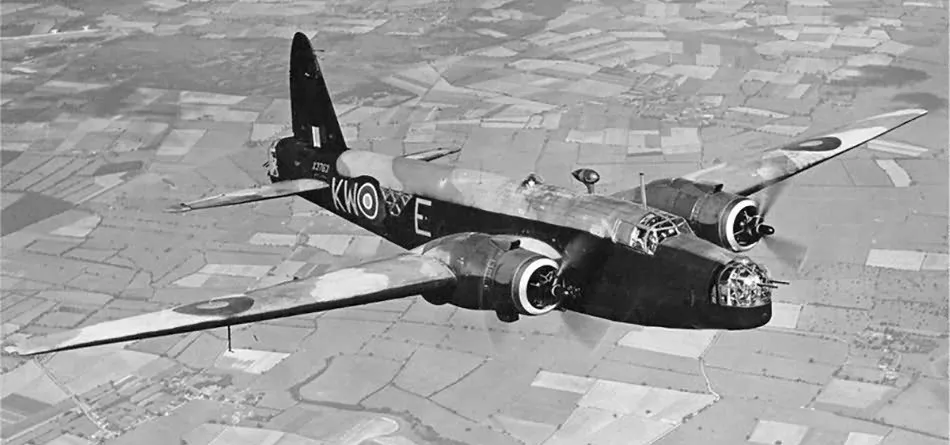
Vickers Wellington B. Mk. III (Serial No. X3763), coded KW-E, No. 425 'Alouette' (B) Squadron, RCAF, late summer of 1942
The Vickers Wellington was a British twin-engined, long-range medium bomber. It was designed during the mid-1930s at Brooklands in Weybridge, Surrey. Led by Vickers-Armstrongs' chief designer Rex Pierson, a key feature of the aircraft is its geodetic airframe fuselage structure, which was principally designed by Barnes Wallis. Development had been started in response to Air Ministry Specification B.9/32, issued in the middle of 1932, for a bomber for the Royal Air Force. This specification called for a twin-engined day bomber capable of delivering higher performance than any previous design.
The Wellington was used as a night bomber in the early years of the Second World War, performing as one of the principal bombers used by Bomber Command. During 1943, it started to be superseded as a bomber by the larger four-engined "heavies" such as the Avro Lancaster. The Wellington continued to serve throughout the war in other duties, particularly as an anti-submarine aircraft.
It holds the distinction of having been the only British bomber that was produced for the duration of the war, and of having been produced in a greater quantity than any other British-built bomber. The Wellington remained as first-line equipment when the war ended, although it had been increasingly relegated to secondary roles. The Wellington was one of two bombers named after Arthur Wellesley, 1st Duke of Wellington, the other being the Vickers Wellesley.
In August 1936, an initial order for 180 Wellington Mk I aircraft, powered by a pair of 1,050 hp (780 kW) Bristol Pegasus radial engines, was received by Vickers; it had been placed so rapidly that the order occurred prior to the first meeting intended to decide the details of the production aircraft. In October 1937, another order for a further 100 Wellington Mk Is, produced by the Gloster Aircraft Company, was issued; it was followed by an order for 100 Wellington Mk II aircraft with Rolls-Royce Merlin X V12 engines. Yet another order was placed for 64 Wellingtons produced by Armstrong Whitworth Aircraft. With this flurry of order and production having been assured by the end of 1937, Vickers set about simplifying the manufacturing process of the aircraft and announced a target of building one Wellington per day.
A total of 180 Wellington Mk I aircraft were built; 150 for the RAF and 30 for the Royal New Zealand Air Force (RNZAF) (which were transferred to the RAF on the outbreak of war and used by 75 Squadron). In October 1938, the Mk I entered service with 9 Squadron. The Wellington was initially outnumbered by the Handley Page Hampden (also ordered by the Ministry to B.9/32) and the Armstrong Whitworth Whitley (to B.34/3 for a 'night' bomber) but outlasted both rival aircraft in service. The Wellington went on to be built in 16 separate variants, in addition to two training conversions after the war. The number of Wellingtons built totalled 11,462 of all versions, a greater quantity produced than any other British bomber. On 13 October 1945, the last Wellington to be produced rolled out.Wikipedia
 YouTube Vickers Wellington documentary
YouTube Vickers Wellington documentary
425 (B) Sqn Je te plumerai ("Alouette")
History of the Squadron during World War II (Aircraft: Wellington III, X, Halifax III, Lancaster X)

425 Squadron was formed at Dishforth, Yorkshire, UK on June 25, 1942 as the RCAF's twenty-second squadron, and fifth bomber squadron, to be formed overseas in WWII. At the time it was part of No 4 Group, RAF Bomber Command. It was unique in being designated "French-Canadian" and every effort was made to find French Canadian airmen elsewhere in Bomber Command who could be transferred to the squadron. It became operational in October, 1942, flying Wellington Mk III aircraft with the squadron code letters KW. It transferred to No 6 (RCAF) Group, Bomber Command when that was formed on January 1, 1943, although remaining at Dishforth. In March, the squadron re-equipped with Wellington X's and from June to October operated from bases in Tunisia (Kairouan/Zina and Hani East airfields) in support of the Allied invasions of Sicily and Italy. In November 1943 the squadron returned briefly to Dishforth and re-equipped with Halifax III aircraft before moving to Tholthorpe, Yorkshire in December, as part of No 62 (RCAF) Base of 6 Group. It remained at Tholthorpe until the end of the war in Europe. In May and June of 1945 it re-equipped with Lancaster X aircraft, in preparation for joining the Tiger Force for attacks on Japan. The surrender of Japan caused the disbandment of the Squadron at Debert, Nova Scotia , on September 5, 1945.
Overall, the squadron flew 328 missions, involving 3694 sorties, in the course of which 9152 tons of bombs were dropped and 55 aircraft were lost. Squadron personnel gained 2 MBE's, 63 DFC's and 4 Bars to DFC, 2 GM's, 18 DFM's, 1 DFC(USA), and 4 MiD's. Battle Honours were:English Channel and North Sea 1943-45, Baltic 1944-45, Fortress Europe 1943-44, France and Germany 1944-45, Biscay Ports 1943-44, Ruhr 1943-45, Berlin 1944, German Ports 1943-45, Normandy 1944, Rhine, Biscay 1943-44, Sicily 1943, Italy 1943, Salerno. Wikipedia, Moyes, Kostenuk and Griffin
Squadron History (Bomber Command Museum PDF)
Maps for Movements of 425 Squadron 1942-45
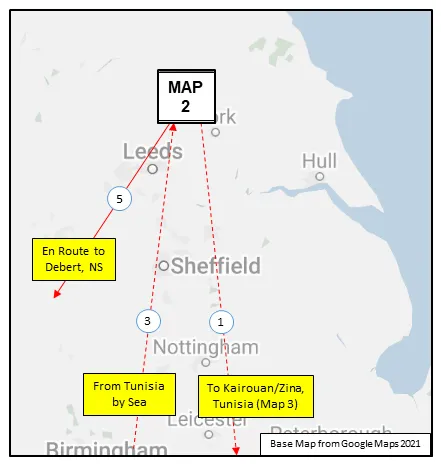 MAP 1: 425 Squadron Movements 1942-45 (right-click on image to display enlarged in new tab) | 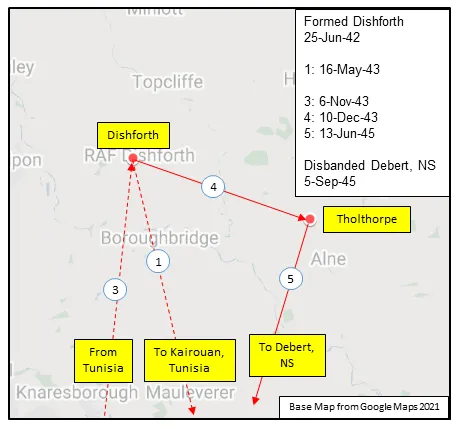 MAP 2: 425 Squadron Movements 1942-45 (detail of Map 1) | 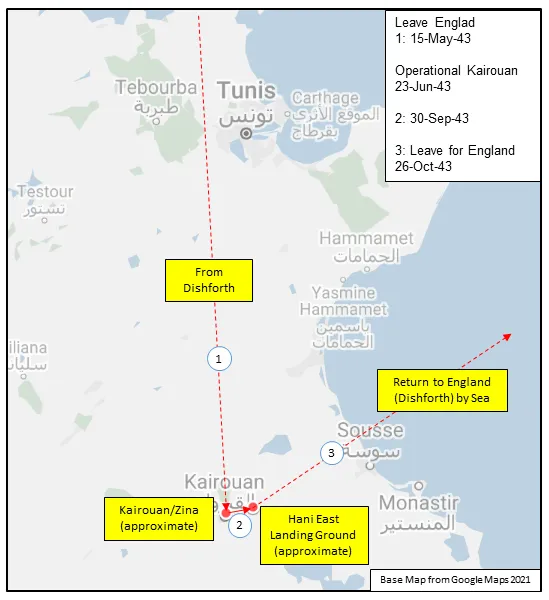 MAP 3: 425 Squadron Movements in North Africa 1943 |
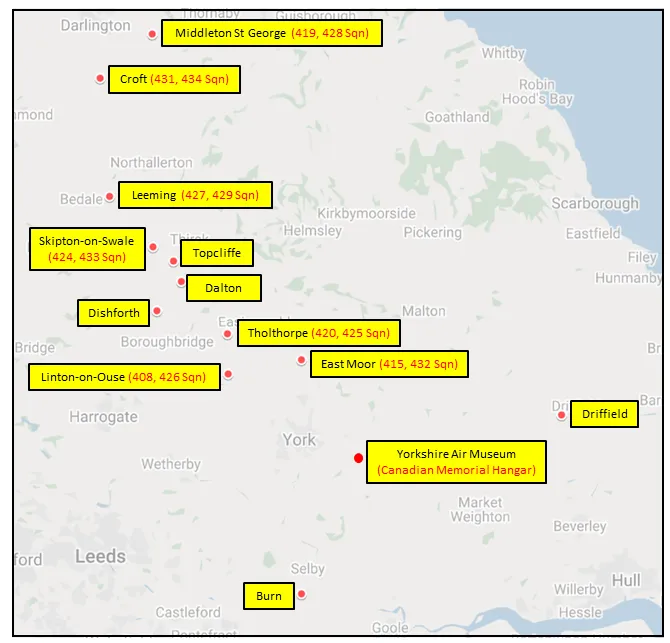
425 Squadron History Summary 1942-45
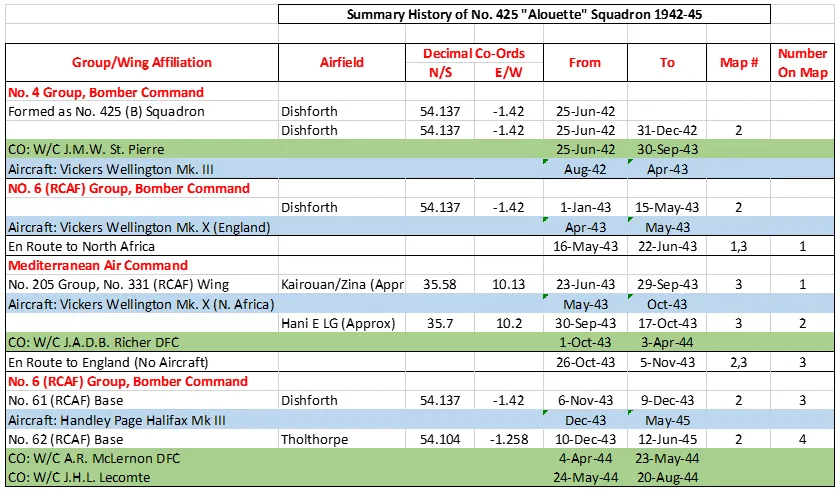
425 Squadron History Summary 1942-45 Page 2

History of the Squadron Post-WWII (Aircraft: Canuck, Voodoo, Hornet)
The squadron was re-formed as an All-Weather (Fighter) unit at St Hubert (Montreal), Quebec on 1 October 1954. It flew CF-100 Canuck aircraft on North American air defence. Selected as one of five units to be re-equipped with CF-101 (Voodoo) aircraft, it was deactivated on 1 May 1961 pending delivery of the aircraft. Reactivated at Namao (Edmonton), Alberta on 15 October 1961, the squadron initially received the trainer version of the CF-101 and served as a training unit to convert the remaining four squadrons to this aircraft. It afterwards moved to Bagotville, Quebec, in July 1962, and was declared operational on 1 October when No. 3 All-Weather (Fighter) Operational Training Unit assumed responsibility for all future CF-101 training. On 1 February 1968 the squadron was integrated into the Canadian Armed Forces. From 1982, the Canadian Forces started to acquire CF-18 Hornets; 425 Sqn received them in 1985. In 2005, 433 Squadron was merged into 425 Squadron. 425 Tactical Fighter Squadron is an integral part of NORAD and of the North Atlantic Treaty Organization (NATO). In peacetime, the squadron's fighters provide continuous surveillance of the East Coast of Canada. In addition, it must be ready for rapid deployment anywhere in the world in support of NATO or contingency operations.Wikipedia, Kostenuk & Griffin, and www.canada.ca/en/air-force/corporate/squadrons/425-squadron.html
 Canadian Virtual War Memorial
Canadian Virtual War Memorial

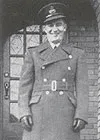
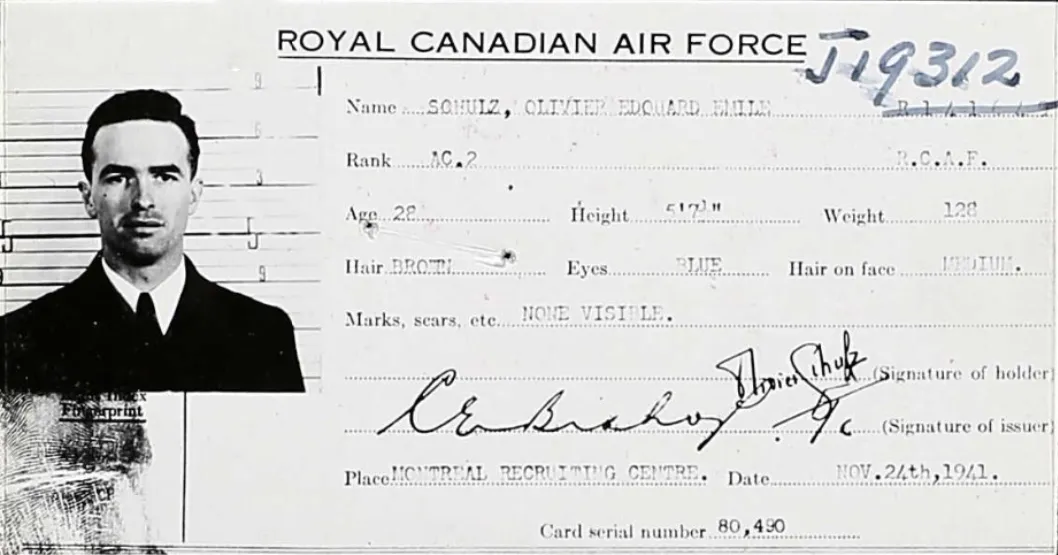

 Wikipedia Vickers Wellington
Wikipedia Vickers Wellington RCAF - Vickers Wellington
RCAF - Vickers Wellington